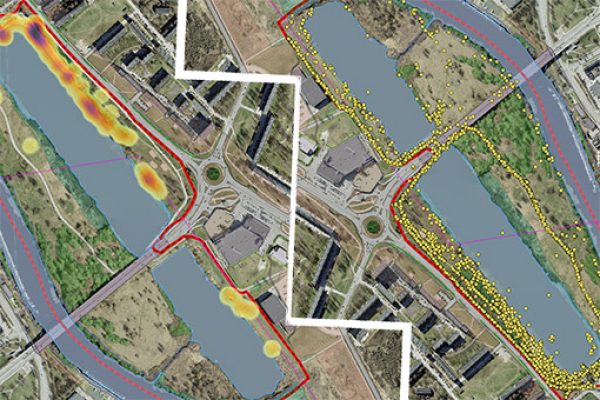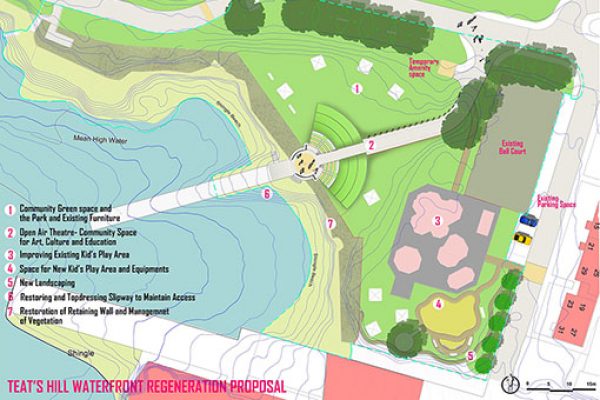Introduction
Researchers have created a tool to plan and design effective urban blue spaces.
Led by the BlueHealth team at the WHO Regional Office for Europe, the Decision Support Tool (DST) is the first tool designed to help users assess blue spaces with a focus on health and wellbeing.
Designed and developed by the Ocean Predictions and Applications Division at the Euro-Mediterranean Centre on Climate Change Foundation (CMCC Foundation), the DST helps users to make a holistic assessment of any given blue space, to help (a) identify risks, and (b) maximise the benefits to public health and the environment. This tool is an important part of the BlueHealth Toolbox.
Click here to visit BlueHealth’s Decision Support Tool (DST).
In summary the DST:
- Highlights the magnitude of any health risks and identifies populations that could be affected
- Provides guidance on creating health-enhancing physical and social activities in and around blue spaces
- Informs risk assessments as well as long-term decision making to manage urban blue spaces
- Identifies ecosystems that need protecting and enhancing for fundamental urban services
- Offers evidence to support planning and maintenance of new or existing spaces
Why assess the risks and benefits of blue space?
Cities all over the world are investing in urban blue infrastructure to maximise the health benefits of blue spaces to improve urban quality of life.
Blue spaces have both functional and recreational purposes. They play a fundament role in society by providing drinking water, transportation, economic opportunities, energy generation and sewage treatment. They also potentially mitigate public health challenges by promoting healthy lifestyle activities that prevent symptoms of mental health disorders, inactivity and obesity.
Yet, blue spaces are also associated with health hazards, ranging from accidental injuries to vector-borne diseases. Potential risks and benefits need to be identified before they can be managed or prevented through urban infrastructure design and planning.

Follow the questions provided by the DST to identify possible risks and benefits.
Using the DST: why, who, where and how?
Why use the DST?
The tool uses a breadth of international blue space-specific research, by categorising and applying insights from different blue environments. This translates into features and guidance in the following three areas that can be used to support planning designs, reviews and applications
- Preventing health risks (e.g. injuries, drowning, illnesses, diseases, climate exposure)
- Promoting human health benefits (e.g. guidance for physical, mental and social wellbeing)
- Improving the ecosystem and the environment (e.g. air and water quality, or biodiversity)
Who should use the DST?
The DST is designed for urban planners, landscape architects, local decision-makers, researchers, and stakeholders involved in planning, maintaining and designing blue spaces. The tool can be applied to support the planning and further development of blue spaces or to assess and improve the performance and health benefits of existing blue spaces.
Where can the DST be used?
The DST can be applied to suit different urban or rural blue spaces of any size, including rivers, lakes, waterways, coastlines, wells, and artificial features like fountains.
How does the DST work and how do you access the tool?
The DST can be used on desktop internet browsers or from a mobile phone or tablet, the tool generates downloadable advice in portable document format (PDF).
Watch the DST walkthrough video below, for step-by-step instructions on how to use the tool.
Methodology
The DST reflects various research inputs.
Local authority survey
The project started with a local authority survey to help us identify how municipal decision-makers use and consider the relevance of blue spaces. This helped us to understand policy processes and how decisions are made, providing us with a baseline of information about local level needs for assessing urban blue spaces.
Review of existing tools
Next, we reviewed existing decision support tools (DSTs) focused on environmental issues, and specifically on water and blue space management. This allowed us to identify different structures and concepts to compile blue space-specific tools and guidance frameworks. This review was a vital step to conceptualising and structuring the DST.
Evidence review
To identify risks and benefits of blue spaces, we completed an evidence review to inform the structure, technical coverage and actionable information provided by the tool for use on a local level. Based on this evidence, guidance documents were produced for all risks and benefits and reviewed by a consortium of internal and external experts.
Creating an online user journey
We transferred all of the research and guidance into a website format, leading the user through a series of steps. The platform guides users to begin by selecting the type of blue space and its related use, followed by the relevant risks and benefits that should be reviewed for the local conditions.
As the user completes each step, respective guidance documents are generated to support planning, design and management decisions for healthy and sustainable blue space. Each outcome is described in terms of its relevance to health, identifying the scale of the threat or opportunity, and the populations most likely to be affected.
The tool also features an assessment of risk, listing design features that might reduce the risk, or enhance and maximize possible benefits. These include economic data on costs, savings and future trends information that allow for planning blue spaces and managing environmental conditions.
Final testing
After developing the web-based DST we asked several local authorities to test and review the platform and user experience. We then refined the site into a validated version applicable for a wide range of blue spaces across Europe.
Read the case study about how we tested the DST at a BlueHealth intervention in Plymouth, UK.















